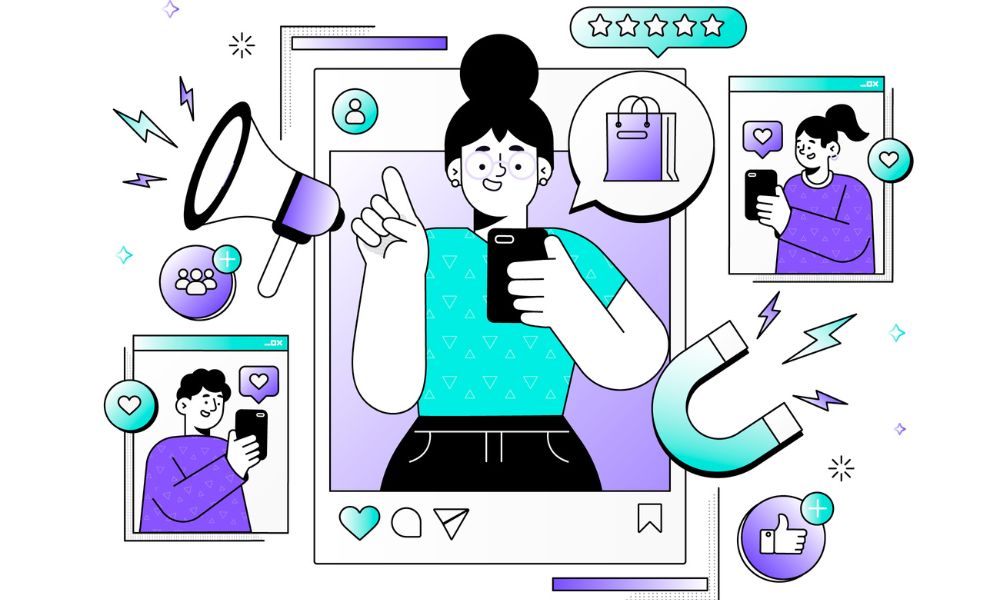Not every influencer has influence. In a space where millions of creators compete for attention, what separates real impact from noise isn’t the size of someone’s following, it’s the level of trust they’ve built with their audience.
Credibility is what turns a post into a recommendation, a mention into a conversion, and a partnership into long-term brand equity. When a creator is seen as honest, knowledgeable, and aligned with their niche, people listen. When they’re not, even a campaign with high reach can fall flat, or worse, damage the brand they represent.
In this guide, we’ll break down what influencer credibility really means, how to measure it, and how to spot the red flags that often get missed. Whether you’re a brand looking to build better partnerships or a creator focused on long-term growth, this article will give you the tools to make credibility a competitive advantage, not a guessing game.
Let’s start by looking at what influencer credibility is, and why it’s more important than ever.

What Is Influencer Credibility and Why It Matters?
Not every creator who posts consistently is seen as credible. Influencer credibility is built over time through a person’s communication, consistency of actions, and audience response. It’s one of the most important factors in determining whether a collaboration actually drives results.
Influencer credibility is the perceived level of connection, authenticity, and expertise an influencer holds in the eyes of their audience. It’s not just what someone says, but how their community responds. A credible influencer is seen as genuine, informed, and aligned with the content they create, and because of that, their recommendations carry weight.
Audiences can tell when an influencer believes in what they’re promoting. When that belief is real, it builds trust not just in the influencer but also in the brand they choose to work with.
Follower Count ≠ Credibility
A common misconception is that bigger followings equal greater influence. In reality, that’s often not the case. Micro and nano influencers, those with smaller, more focused communities, typically see higher engagement rates and stronger trust from their followers.
These influencers aren’t shouting into the void. They’re talking directly to people who value their perspective and see them as part of their daily lives. That kind of relationship often drives better conversions and long-term brand loyalty than broad-reach partnerships with little personal connection.
💡If you’re looking to find high-trust creators who align with your goals, an influencer discovery tool can help you focus on more than just follower counts, helping you filter based on relevance, engagement, and audience trust indicators.
Why Credibility Impacts Campaign Outcomes?
When a creator has credibility, their audience listens. And that trust transfers – directly – to the brands they promote. Studies show that consumers are far more likely to engage with, remember, and act on sponsored content when it comes from a source they already believe.
According to data from WARC and other marketing research, 85% of marketers say authenticity is more important than reach when selecting influencers. It’s not enough to be seen, the content needs to feel believable, and the message has to resonate. That’s why credibility isn’t just a nice-to-have; it’s often the difference between a campaign that performs and one that falls short.
The 4 Pillars of Influencer Credibility
Credibility comes from a blend of qualities that work together to build a connection. Whether you’re evaluating a potential partner or building your own influence, these four pillars form the foundation of lasting credibility in the creator space.
1. Authenticity & Transparency
People can tell when something feels overly curated or insincere, and that’s often the fastest way to lose trust. Influencers who speak with a genuine tone, show their personality, and share real experiences tend to stand out. They’re not afraid to be human, to talk about what works and what doesn’t, and to admit when something isn’t perfect.
Transparency also plays a major role. Clear disclosure of paid partnerships (using tags like #ad or #sponsored) builds respect with the audience. It shows the influencer values honesty over short-term performance, and that kind of behavior makes sponsored content feel more like a recommendation than a sales pitch.
2. Expertise & Niche Authority
Credibility increases when influencers speak from real knowledge. Whether they’ve built experience through formal credentials, hands-on work, or long-term immersion in a niche, their voice carries more weight when backed by substance.
Creators who consistently educate, offer insight, and answer questions with depth show that they’re not just entertainers, they’re trusted sources in their field. That’s especially important in verticals like health, finance, tech, or fitness, where the audience expects more than surface-level commentary.
💡Looking to match with influencers who already have that depth in your category? Influencer Match can help surface creators with a proven track record in your niche, not just those with reach.
3. Consistency & Reliability
Trust is built through repetition. Influencers who show up regularly, post with a clear message, and maintain a steady voice create familiarity, and familiarity builds credibility.
This doesn’t just apply to their content schedule. In brand partnerships, reliability shows in how well they stick to deadlines, follow creative briefs, and handle communication. When a creator is both consistent in their public work and reliable behind the scenes, it signals to both brands and followers that they’re serious about what they do.
4. Audience Relationship & Engagement
A large audience means little if no one’s listening. What really shows credibility is how an influencer interacts with their community. Do they reply to comments? Answer DMs? Acknowledge feedback? These behaviors show that they’re not just broadcasting, they’re connecting.
Engagement is also about action. When followers comment, reshare content, or take recommendations seriously, it’s a sign that the relationship is built on more than popularity. It’s built on belief.
💡If your team is trying to scale outreach with creators who have this kind of connection, an influencer outreach tool can help you start conversations with the right people and track how those relationships grow.

How to Assess Influencer Credibility (With Tools & Metrics)
Knowing what credibility looks like is only part of the equation. The next step is figuring out how to measure it. While some signals are easy to spot, others require a closer look, both through data and direct evaluation. A mix of quantitative and qualitative checks gives the clearest picture of whether an influencer is a good fit for your brand.
Quantitative Checks
Start with the numbers. While metrics aren’t everything, they can reveal patterns that support (or challenge) an influencer’s perceived trustworthiness.
- Engagement Rate Formula: A high follower count means little if no one’s interacting. To calculate engagement rate, use: (Likes + Comments + Shares) ÷ Followers × 100
This helps determine how active and responsive an influencer’s audience really is. - Audience Quality: Tools can help identify red flags like fake followers or suspicious spikes in growth. You’ll also want to look at how well their audience matches your target demographic, based on age, location, interests, and behavior.
- Sentiment Analysis: Not all engagement is positive. Scan the tone of comments to see if people are genuinely interested, appreciative, or simply leaving generic replies. Tools that offer sentiment tracking can speed up this process.
💡If you’re looking to streamline the full vetting process, an influencer hiring platform can surface data-backed profiles with these metrics built in, saving time and reducing guesswork.
Qualitative Checks
While data shows the trends, qualitative review reveals the tone, depth, and alignment that often matter more.
- Voice and Tone: Does the influencer sound like someone your audience would trust? Is their communication style genuine, clear, and aligned with their niche?
- Content Quality: Review a sample of their posts and stories. Is the content original, thoughtful, and consistent? Does it reflect care and personal investment, or feel repetitive and templated?
- Brand Alignment: Look at previous partnerships. Were the collaborations relevant to the influencer’s audience? Did they feel like a natural fit, or did they come across as forced?
These insights help you move beyond surface-level engagement and into the type of fit that actually drives campaign results.
The Vetting Process
Once you’ve reviewed both data and content, take the final step: talk to the creator. Building credibility starts with honest communication.
- Ask for Previous Campaign Results: Influencers who track their own performance should be able to share stats like reach, clicks, conversions, and feedback from past partners.
- Review Content Performance: Look at branded posts in their feed. How did their audience respond? What type of content sparked the most meaningful interaction?
- Schedule a Discovery Call: A short conversation reveals a lot, how the influencer thinks about their audience, how they’ve handled partnerships in the past, and whether they’re genuinely excited about your brand.
💡If you’re looking to fully offload this step or scale your search with expert guidance, an influencer marketing agency can manage the vetting and relationship-building for you, often with access to deeper campaign data.
How to Spot Low Influencer Credibility (Red Flags)
Not every red flag is obvious at first glance. Some signs of low credibility are easy to miss, especially when surface-level metrics look good. But ignoring these cues can lead to wasted spend, poor campaign performance, or even brand risk. Here’s what to look out for when evaluating potential partners.
1. Sudden Follower Spikes
A sharp increase in followers without a clear reason often suggests that growth may not be organic. This could mean the influencer purchased followers, joined an engagement pod, or went viral for unrelated content that doesn’t connect with their usual niche. Always check whether recent growth aligns with meaningful engagement or if the numbers look inflated without interaction to support them.
2. Irrelevant or Generic Engagement
Engagement that looks active on the surface but lacks substance can signal a problem. If the majority of comments are short phrases like “Nice pic” or strings of emojis, there’s a good chance the influencer isn’t fostering genuine conversations. Real connection shows in thoughtful replies, niche-specific discussions, and community interaction. Shallow comments often point to low-quality engagement or bot activity.
3. Weak Disclosure Practices
Credible influencers are upfront about their partnerships. If sponsored posts aren’t clearly marked with #ad, #sponsored, or similar disclosures, it’s not only a credibility issue but a potential compliance risk. Lack of transparency can damage credibility with both followers and your brand. Look for influencers who make their paid content clear and still manage to keep it aligned with their usual tone and content style.
4. No Clear Niche or Values
When an influencer promotes everything from fitness gear to cryptocurrency to kitchen gadgets, it becomes hard to tell what they actually stand for. A lack of focus can confuse followers and make brand partnerships feel forced or transactional. Consistency in content theme and brand values gives followers something to connect with and believe in. Without it, credibility breaks down.
5. AI-Generated Influencers Without Disclosure
The rise of AI-generated influencers adds another layer of complexity. While virtual creators can be effective in some campaigns, they should always be clearly labeled as non-human. When audiences discover that an influencer isn’t real, and that fact wasn’t disclosed, trust erodes quickly. This also raises brand safety concerns, especially if the AI personality lacks human oversight or context.

Building and Maintaining Credibility with Influencers
Even with the right influencer on board, credibility is not guaranteed. It needs to be nurtured throughout the partnership. Your brand’s collaboration, communication, and support of creative freedom all play a role in how credible the final message feels to the audience.
1. Partner with Aligned, Trust-Building Influencers
Strong partnerships begin with alignment. When a creator’s values and audience overlap with your brand, their content feels natural instead of forced. This alignment helps messages land more effectively because they are coming from someone the audience already trusts. Working with influencers who genuinely understand and care about your product increases the likelihood that their followers will too.
2. Co-Create Flexible, Authentic Content
Credibility drops quickly when content feels scripted or overly controlled. While it’s important to share goals and brand guidelines, the most effective collaborations give influencers the space to speak in their own voice. They know their audience better than anyone else. Letting them shape the story in a way that feels honest creates content that performs better and feels more real.
3. Use Clear Briefs and Transparent Partnerships
Clarity prevents misunderstandings. Providing influencers with a well-structured brief ensures everyone knows what the expectations are, from messaging and timing to content format. When both sides agree on deliverables, tone, and timeline up front, the partnership runs more smoothly. Transparency builds mutual trust, which strengthens the relationship over time.
4. Monitor Performance and Feedback
Once the content is live, continue to evaluate how it performs. Look at engagement patterns, comment sentiment, and how audiences respond to the brand mention. Use those insights to guide future collaborations or adjust your influencer strategy. Tracking performance is not just about numbers. It’s about understanding whether the message felt authentic and whether the audience believed it.
How Influencers Can Build and Protect Their Credibility
Credibility isn’t something influencers have or don’t. It’s something they earn through every post, comment, and brand partnership. Once it’s established, protecting it becomes just as important as building it. These practices help creators strengthen their reputation over time and remain trusted voices in their communities.
Choose Partnerships Wisely: Every collaboration sends a message. When influencers promote products they don’t genuinely use or believe in, their audience can usually tell. Choosing brands that align with your values, lifestyle, and audience expectations builds trust with every campaign. Saying no to a partnership that doesn’t feel right often does more for credibility than saying yes to everything.
Always Be Transparent: Credibility depends on honesty. Letting your audience know when a post is sponsored and being open about why you chose to work with a brand, reinforces your integrity. Whether it’s through a simple #ad tag or a direct statement in the caption, transparency shows that you respect your followers and value their attention.
Prioritize Engagement Over Reach: Having a large audience doesn’t mean much if no one is paying attention. What matters more is how consistently you engage with your followers. Replying to comments, answering questions, and showing up in meaningful ways builds a sense of community. These small actions create real connection, which is what turns a content creator into a trusted voice.
Keep Learning and Growing: No one knows everything, and audiences respect creators who keep learning. Staying up to date in your niche, experimenting with new content formats, and sharing your own journey of growth adds depth to your credibility. People are more likely to believe someone who evolves with their field rather than someone who tries to appear as an expert in everything.

In the End, Trust is the New ROI
The success of influencer marketing no longer depends on flashy numbers or perfectly curated posts. It depends on credibility. Audiences are more aware, more selective, and more loyal to creators who show up honestly and consistently. And when that kind of credibility is present, it doesn’t just benefit the influencer, it elevates the entire brand partnership.
For brands, working with trusted voices leads to stronger engagement, better conversions, and long-term relationships with audiences. For influencers, credibility is what sustains a career over time, turning one-off campaigns into ongoing collaborations.
At every stage, from discovery and vetting to content creation and post-campaign reflection, confidence is the factor that determines whether your message sticks or gets ignored. In the end, credibility isn’t just a trait. It’s an investment. And today, it might be the most valuable return you can aim for.



